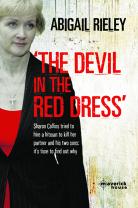Recently in work I’ve been buried in 19th Century crime records. As has been obvious for the past while I’m now working with Findmypast, the online genealogy company. Since I started to research Kirwan I’ve spent so much time with historical records that working with them full-time seemed the logical progression. I’m now their crime history expert and the past couple of months have been insanely busy as we were preparing for the launch of a major collection of court and crime related papers from The National Archives in London. I’ve recorded a couple of webinars showcasing the new records which you can find on the company’s YouTube channel is you’re interested.
As I posted a few weeks ago I was particularly excited to find Kirwan’s handwritten appeal among the records but I find the whole collection absolutely fascinating. After writing two works of true crime I know how tricky it can be to get hold of the actual paperwork. Unlike America, where you can request any document lodged in a public court, in Ireland getting hold of court documents is next to impossible. In fact when I was working on Devil the only garda statements I could lay my hands on where the ones that had formed part of the American case and so had been used as evidence in an American court. It used to be possible to get hold of the book of evidence if you had built up a good relationship with the gardai who had worked on the case or the barristers but these days it’s impossible. I’m used to hearing the exasperation and frustration from foreign journalists who want to research the case when they discover how little information is available here.
You can find out quite a bit from the judgements in appeals of cases which you can find on the Courts Service website but it’s not the same as the book of evidence. There’s also next to no chance of talking to prisoners here. I did get the chance to visit Essam Eid while he was in gaol in Dublin but that was a specific case. It’s rare otherwise.
That’s what I find so fascinating with the court records that you can find from the 19th century. With my Victorian subjects I can read their prison records, appeals and trial transcript. I might even find photographs. The amount of information I can get about a crime that was committed more than one hundred and sixty years ago is vast compared to what would be obtainable for a modern Irish case. I know how difficult it is because I’ve done it and because I still get regular contacts from reporters and researchers who are still doing it. It’s thankless work, especially if you’re not able to get to the court for the trial itself.
I sat in the same room as the subjects of my books and was able to watch them and listen to all the evidence. I know as much about those cases as it’s possible to know for a writer. But I know more about Kirwan, who died a century before I was born. I know how tall he was, what colour eyes he had, how he spoke, how he signed his name. I know thirty years of his life and the lives of those around him. That’s one of the reasons why I love historical research so much. I know that if I dig hard enough, search thoroughly enough, I will find out more than I could find out sitting in the same room as someone.
When I was researching Devil, seven years ago exactly, I was excited by how much I could find out online. But the possibilities from the digitisation of historical material are awe inspiring. Most of the research I’ve done on Kirwan has been the good old fashioned legwork type. I’ve been in so many different libraries, my pencil case is bristling with readers’ tickets. But so many of the really exciting discoveries I’ve made have been through digitised material. I’m excited to see where things go from here. So many stories, so many connections, so many lives waiting to be discovered. I want to be on the front line of that. How could I not?


Leave a Reply